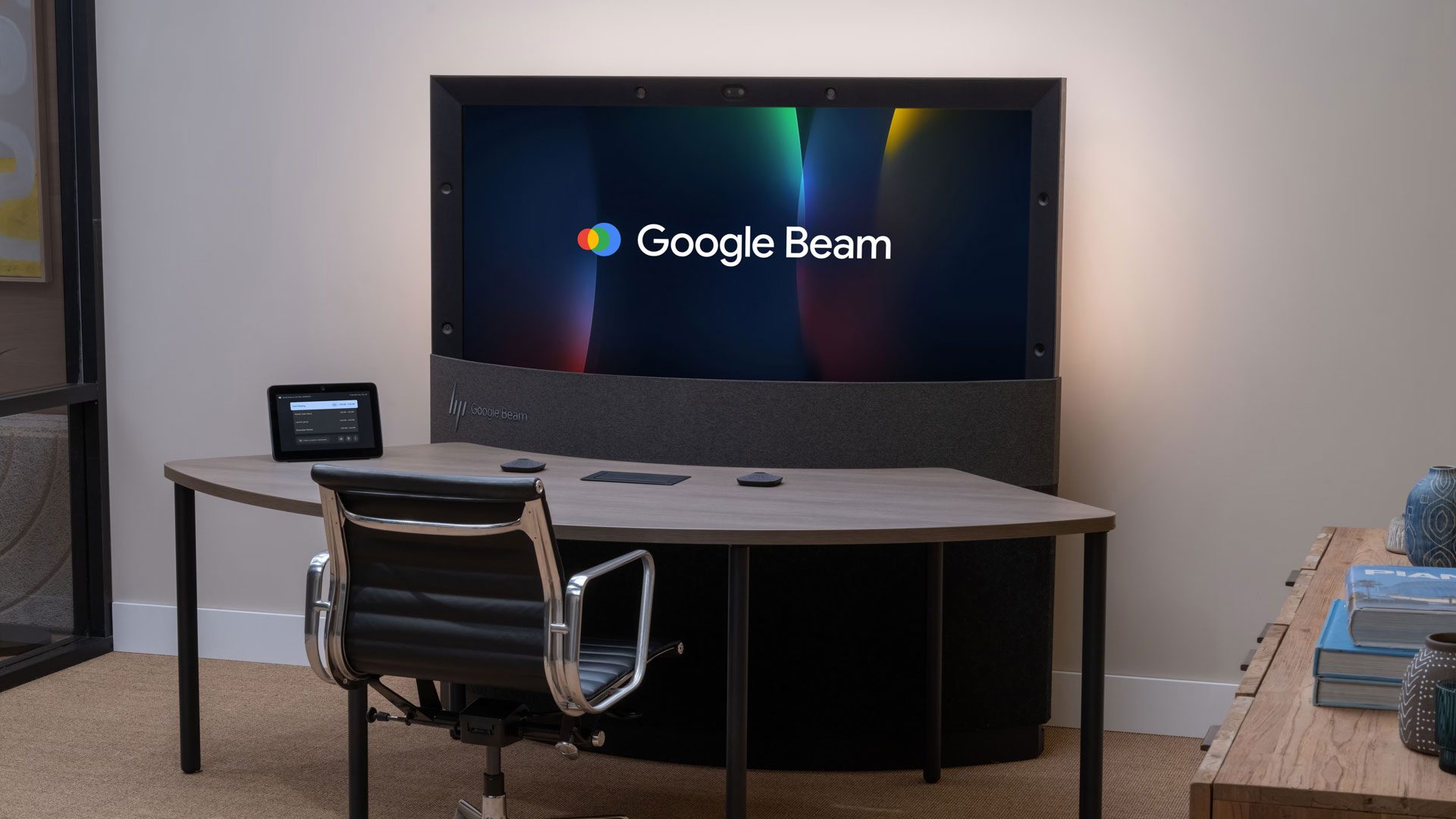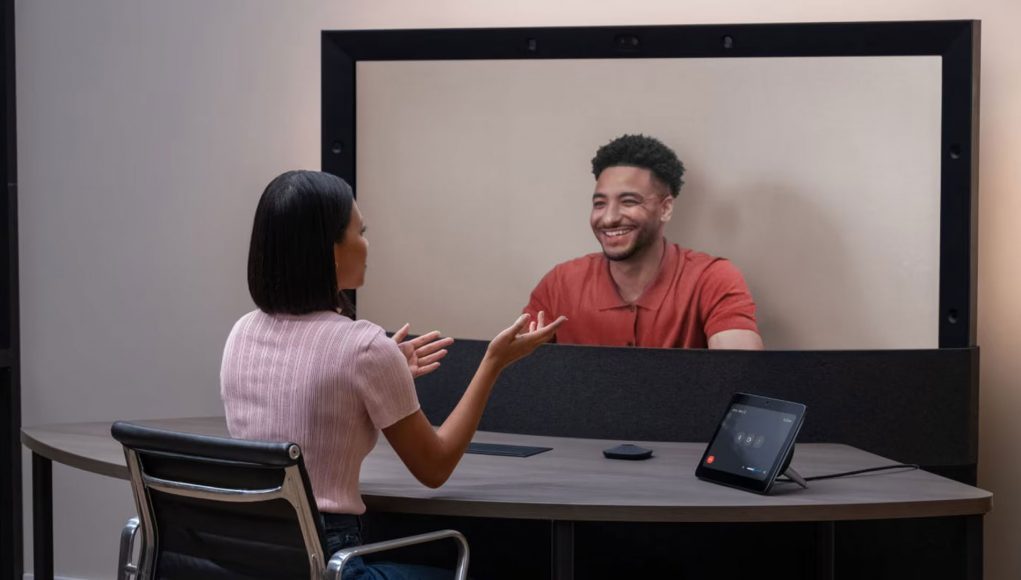HP announced last year it was going to be the first to offer hardware based on Google Beam (formerly ‘Project Starline’), the light field-based 3D videoconferencing platform. Now, HP unveiled ‘Dimension’, which is being pitched to enterprise at $25,000 a pop.
HP Dimension with Google Beam is said to use six cameras and “state of the art AI” to create a realistic 3D video of each participant, displayed on a special 65-inch light field display with realistic size, depth, color, and eye contact.
HP says the device, which will be sold to select partners starting in late 2025, will be priced at $25,000. This notably doesn’t come with the Google Beam license, which is sold separately.

As an enterprise-first device, HP Dimension is slated to support Zoom Rooms and Google Meet, so it can do 3D immersive chats, but also 2D traditional group meetings, integrating cloud-based video services such as Teams and Webex.
“We believe that meaningful collaboration thrives on authentic human connections, which is why we partnered with Google to bring HP Dimension with Google Beam out of the lab and into the enterprise,” said Helen Sheirbon, SVP and President of Hybrid Systems, HP Inc. “HP Dimension with Google Beam bridges the gap between the virtual and physical worlds to create lifelike virtual communication experiences that brings us closer together.”
First introduced in 2021, Google Beam (ex ‘Project Starlight’) combines a light-field display to show natural 3D depth without the need for an XR headset or glasses of any sort—essentially simulating a face-to-face chat between two people.
In its testing, HP says Beam this makes for 39% more non-verbal behaviors noticed, as well as 37% more users noting better turn taking, and 28% noticing an increase in memory recall over traditional videoconferencing platforms.







